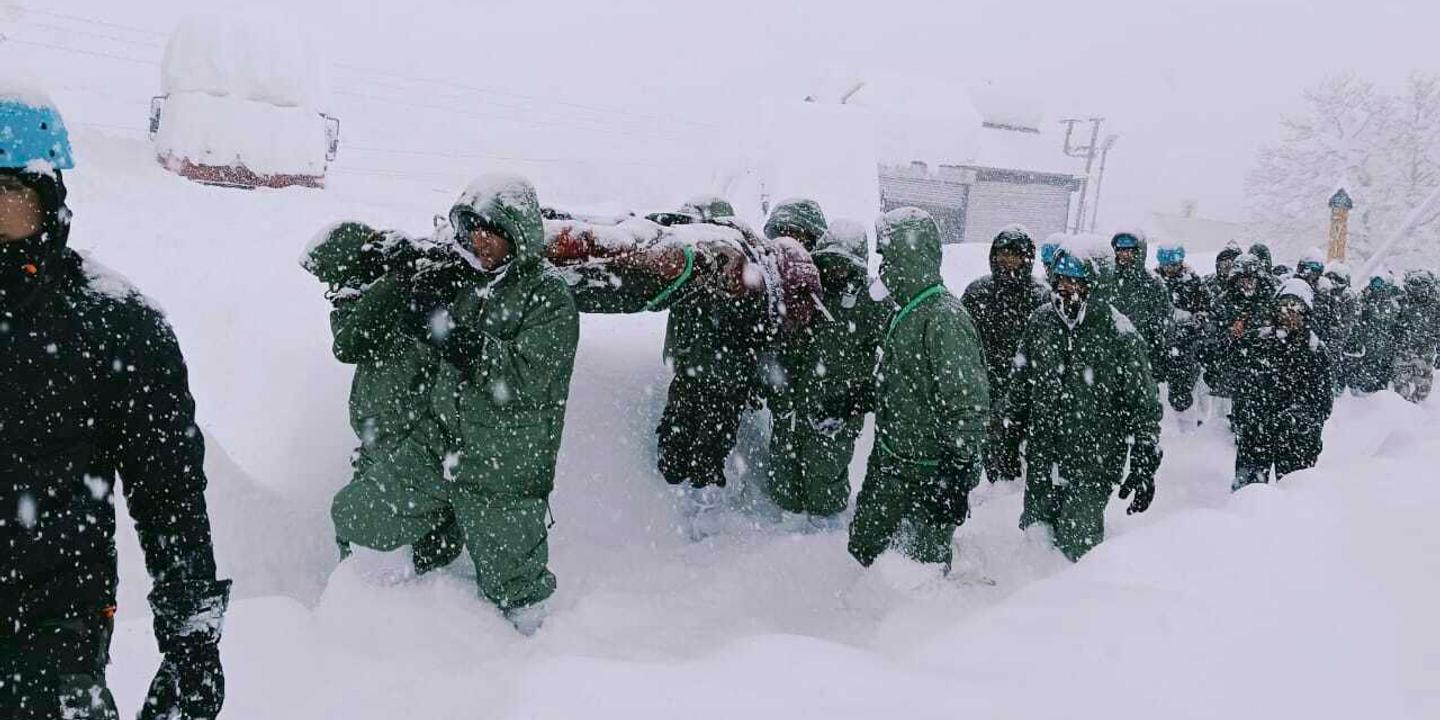
Tragedy Strikes Uttarakhand: Avalanche Leaves Dozens Missing
A devastating avalanche in the Himalayan state of Uttarakhand, India, has left more than forty construction workers missing and presumed buried under snow and debris. Rescue efforts are underway, but hampered by severe weather conditions, as authorities race against time to locate survivors. The incident, triggered by heavy snowfall, occurred on Friday, February 28th, in the Chamoli district, an area known for its challenging terrain and vulnerability to natural disasters.
According to Ridhim Agarwal, a member of the rescue team on site, "Rescuers have been digging for hours through the thick snow. Currently, 15 workers are safe, while 42 are still missing." The avalanche struck a construction site, trapping workers beneath a thick layer of snow and debris. The area has been blanketed by heavy snowfall, making access difficult and further complicating the rescue operations.
Deepam Seth, the state’s police chief, emphasized the impact of the adverse weather conditions on the rescue efforts. "It has been snowing, with strong winds. The roads are completely blocked. We have deployed snow cutters to clear the path," he told NDTV, highlighting the logistical challenges facing rescue teams.
Uttarakhand’s Chief Minister, Pushkar Singh Dhami, expressed his concern over the incident, stating that he was "saddened" and closely monitoring the rescue operations. The state government has pledged to provide all necessary resources to aid in the search and rescue efforts, as well as support for the families of those affected.
The remote location of the avalanche site poses additional challenges. Once weather conditions improve, specialized high-altitude rescue teams are expected to be deployed by helicopter to assist in the search for the missing workers. These teams are equipped with specialized equipment and training necessary to navigate the treacherous terrain and harsh conditions.
Avalanches and landslides are a common occurrence in the high-altitude regions of the Himalayas, especially during the winter season. The combination of steep slopes, heavy snowfall, and fluctuating temperatures creates an environment prone to such natural disasters. However, scientists and environmental experts are increasingly concerned about the impact of climate change and unsustainable development on the frequency and intensity of these events.
The incident has brought renewed attention to the growing concerns surrounding the impact of climate change on the fragile Himalayan ecosystem. Scientific evidence suggests that the increasing use of fossil fuels is contributing to global warming, which in turn leads to more extreme weather events, amplified by warmer ocean temperatures. The changing climate is altering precipitation patterns, leading to more intense snowfall in some areas and increased glacial melt in others, both of which can contribute to the risk of avalanches and landslides.
Furthermore, the accelerated pace of development in the Himalayan region has raised concerns about the consequences of deforestation and unregulated construction. The clearing of forests for infrastructure projects and settlements reduces the natural stability of slopes, making them more susceptible to landslides. Construction activities can also disrupt the natural drainage patterns of the land, increasing the risk of flooding and erosion.
This is not the first time Uttarakhand has faced such a tragedy. In 2021, a devastating flash flood in the same state, triggered by a massive chunk of glacier breaking off and plunging into a river, claimed the lives of nearly 100 people. The incident highlighted the vulnerability of the region to glacial lake outburst floods, which are becoming increasingly common due to rising temperatures.
Even further back, in 2013, devastating monsoon floods and landslides killed an estimated 6,000 people in Uttarakhand. This catastrophe led to widespread calls for a review of development projects in the state, with many arguing that unchecked construction and deforestation were exacerbating the risk of natural disasters.
The recent avalanche serves as a stark reminder of the need for sustainable development practices and increased investment in disaster preparedness in the Himalayan region. Experts emphasize the importance of implementing stricter regulations on construction activities, promoting reforestation efforts, and investing in early warning systems to alert communities to potential hazards. Furthermore, addressing the underlying causes of climate change through global efforts to reduce greenhouse gas emissions is crucial to mitigating the long-term risks facing the Himalayan region.
The focus remains on the ongoing rescue efforts in Chamoli. The hope is that against all odds, more survivors will be found. The incident, however, will undoubtedly spark further debate and scrutiny about the delicate balance between development and environmental protection in the Himalayas, a region that is both breathtakingly beautiful and increasingly vulnerable to the forces of nature. The lessons learned from this tragedy must be applied to ensure the safety and well-being of communities living in this ecologically sensitive region.
